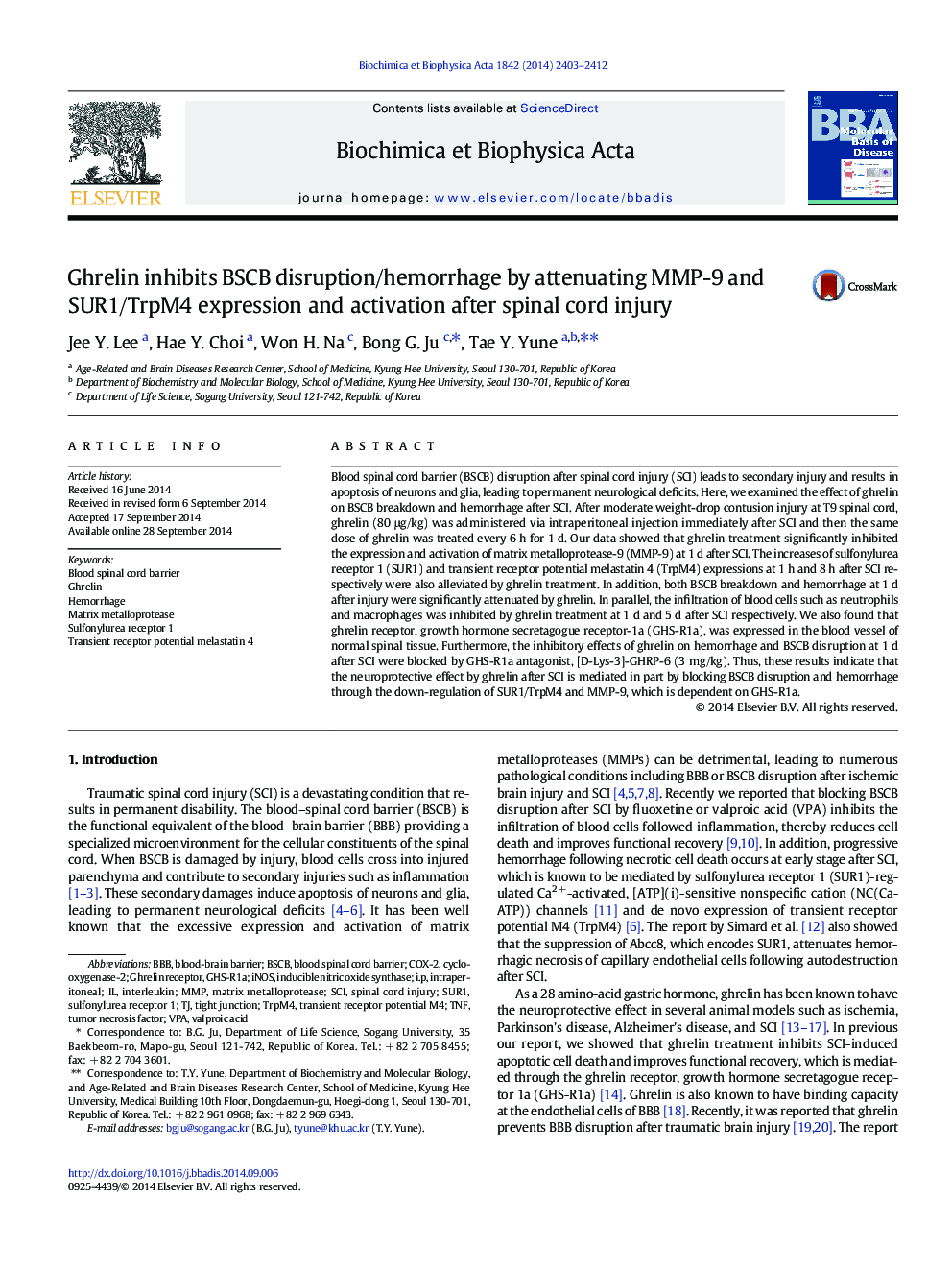| Article ID | Journal | Published Year | Pages | File Type |
|---|---|---|---|---|
| 8259984 | Biochimica et Biophysica Acta (BBA) - Molecular Basis of Disease | 2014 | 10 Pages |
Abstract
Blood spinal cord barrier (BSCB) disruption after spinal cord injury (SCI) leads to secondary injury and results in apoptosis of neurons and glia, leading to permanent neurological deficits. Here, we examined the effect of ghrelin on BSCB breakdown and hemorrhage after SCI. After moderate weight-drop contusion injury at T9 spinal cord, ghrelin (80 μg/kg) was administered via intraperitoneal injection immediately after SCI and then the same dose of ghrelin was treated every 6 h for 1 d. Our data showed that ghrelin treatment significantly inhibited the expression and activation of matrix metalloprotease-9 (MMP-9) at 1 d after SCI. The increases of sulfonylurea receptor 1 (SUR1) and transient receptor potential melastatin 4 (TrpM4) expressions at 1 h and 8 h after SCI respectively were also alleviated by ghrelin treatment. In addition, both BSCB breakdown and hemorrhage at 1 d after injury were significantly attenuated by ghrelin. In parallel, the infiltration of blood cells such as neutrophils and macrophages was inhibited by ghrelin treatment at 1 d and 5 d after SCI respectively. We also found that ghrelin receptor, growth hormone secretagogue receptor-1a (GHS-R1a), was expressed in the blood vessel of normal spinal tissue. Furthermore, the inhibitory effects of ghrelin on hemorrhage and BSCB disruption at 1 d after SCI were blocked by GHS-R1a antagonist, [D-Lys-3]-GHRP-6 (3 mg/kg). Thus, these results indicate that the neuroprotective effect by ghrelin after SCI is mediated in part by blocking BSCB disruption and hemorrhage through the down-regulation of SUR1/TrpM4 and MMP-9, which is dependent on GHS-R1a.
Keywords
iNOSVPABSCBi.pMMPTRPM4COX-2GHS-R1aTNFSUR1Spinal cord injuryTight junctioninterleukinHemorrhageintraperitonealBBBinducible nitric oxide synthaseCyclooxygenase-2scitumor necrosis factorMatrix metalloproteaseBlood-brain barrierBlood spinal cord barrierValproic acidGhrelinsulfonylurea receptor 1Ghrelin receptor
Related Topics
Life Sciences
Biochemistry, Genetics and Molecular Biology
Ageing
Authors
Jee Y. Lee, Hae Y. Choi, Won H. Na, Bong G. Ju, Tae Y. Yune,
